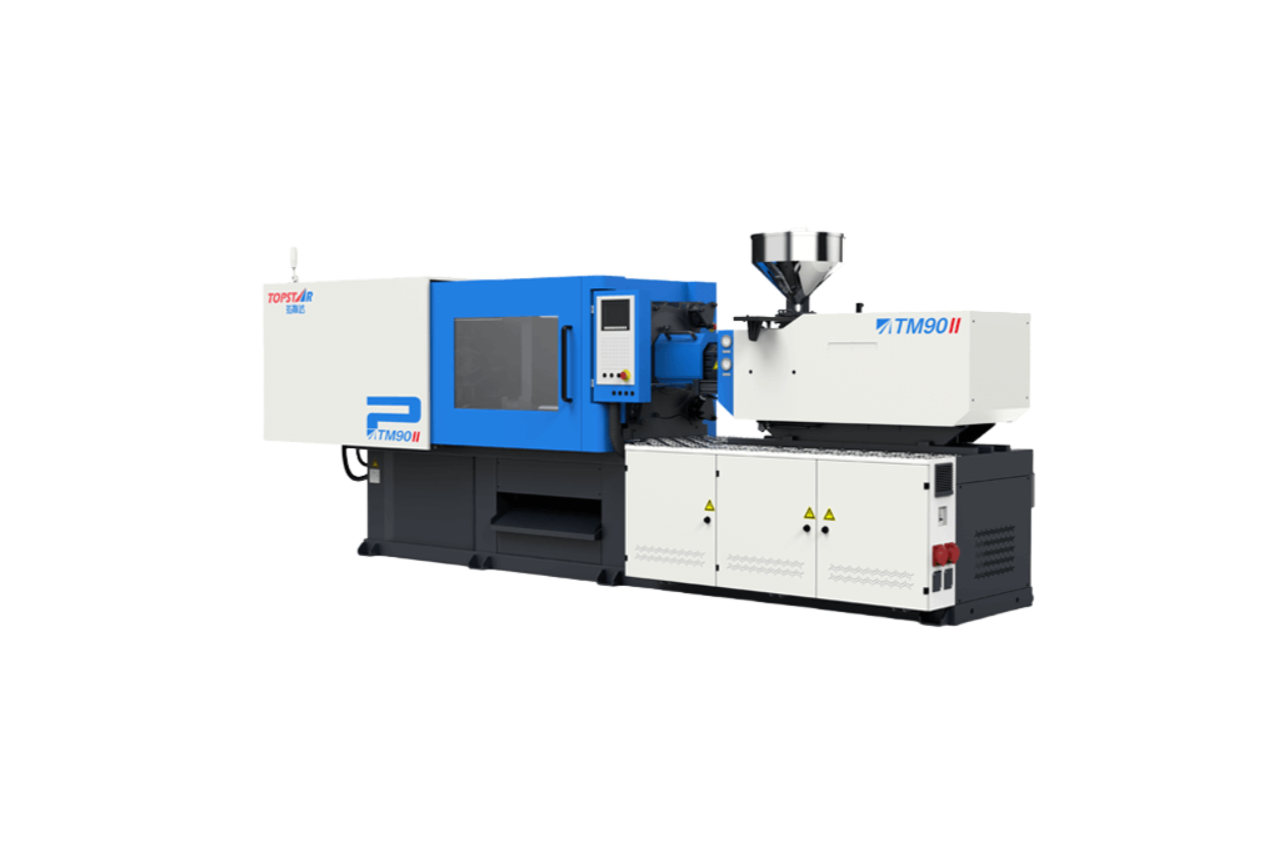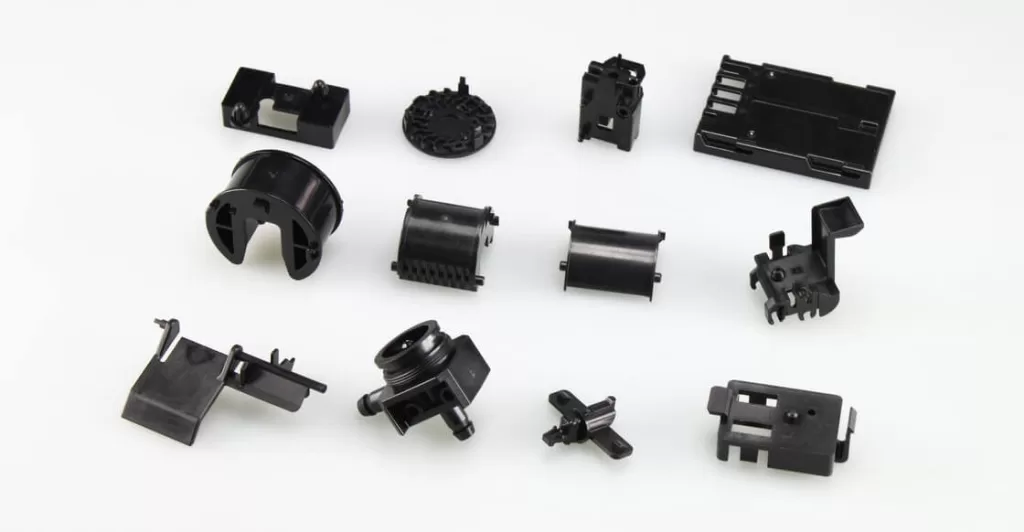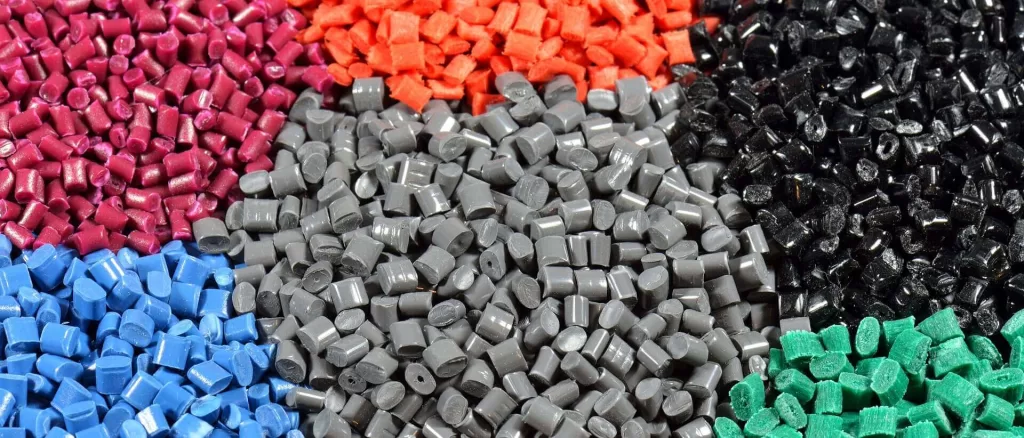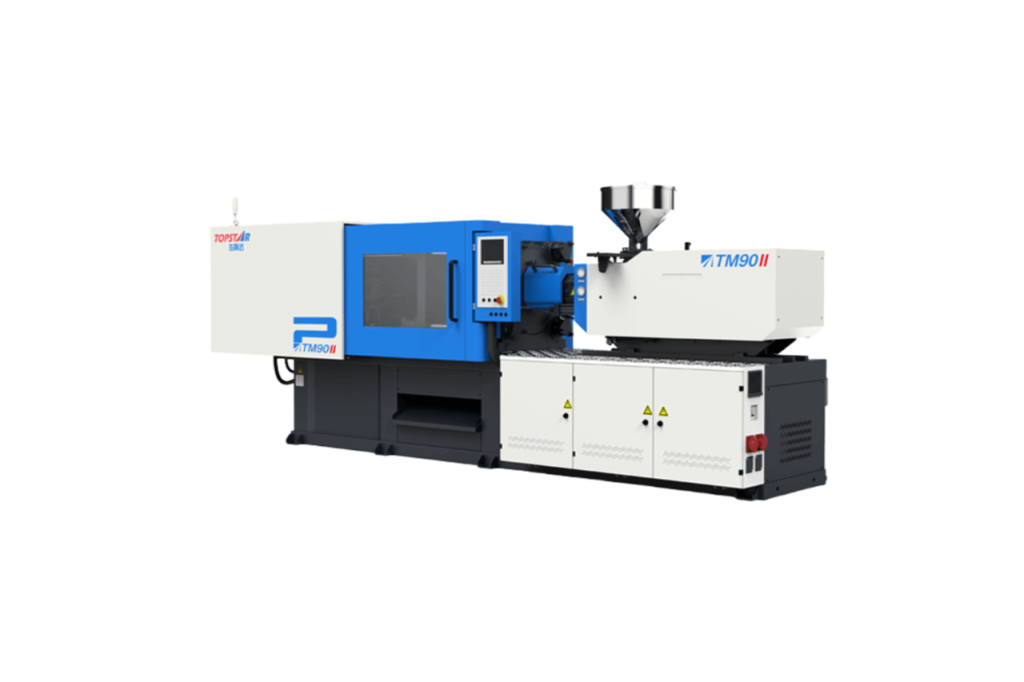Under what circumstances can a 90 ton injection molding machine bring better molding results?
2025/10/13 By le zhan

A 90 ton injection molding machine offers low clamping force, yet its size is sufficient for processing a wide range of multi-cavity consumer product parts, miniature appliance housings, and structural components. It is often an ideal choice for parts with moderate projection areas and wall thicknesses, as well as mold designs that require a stable clamping force without the burden of press inertia and space. As an injection molding machine manufacturer, I will explain to prospective users the various scenarios where a 90-ton injection molding machine can deliver superior results compared to smaller or larger machines.
90 ton injection molding machine are suitable for molding small and medium-sized parts.
90 ton injection molding machines excel at producing small and medium-sized parts, typically weighing 50-500 grams and measuring 50-200 mm. This is because their clamping force strikes a balance between sufficient pressure to seal the mold and not excessive enough to cause damage. Using a smaller injection molding machine, such as a 60-ton machine, to produce parts weighing over 300 grams often results in shortening.
This occurs when the clamping force is insufficient to hold the mold closed during injection, leading to resin leakage or mold warping, which results in an incomplete fill. Conversely, larger molding machines can over-clamp smaller parts, compressing the mold and creating flash that requires trimming. For example, a manufacturer of 350-gram PP food containers switched from a 60 ton injection molding machine to a 90-ton one, reducing shortfalls by 15% and rework time by 20%. In this case, the 90 ton machine is an ideal choice for consumer goods and automotive parts.

Balanced Injection Pressure for Medium-Viscosity Resins
Resin viscosity determines the injection pressure required to fill the mold, so a 90 ton injection molding machine is optimized for medium-viscosity resins such as PP, ABS, and PS. These resins require sufficient pressure to flow into the mold, but not too high to cause flash or deform delicate features. Most 90 ton injection molding machines offer injection pressures between 1,800 and 2,300 bar, which is precisely the pressure range required to fill the mold with medium-viscosity resins without overworking the material.
In addition, using a 90 ton molding machine to mold these resins can lead to two common problems:
Underfill: A 60 ton injection molding machine may lack sufficient pressure to push PP into a mold with thin ribs, leaving gaps.
Material degradation: A 120 ton injection molding machine may apply excessive pressure to the ABS, causing it to heat up and degrade, ultimately resulting in part discoloration.

Suitable for Multi-Cavity Molds: The stability of a 90 ton injection molding machine ensures uniform filling
Some users who require high-volume injection molding rely on multi-cavity molds to increase output per cycle. Therefore, these molds require constant clamping force and injection pressure to fill each cavity uniformly. The rigid frame and precise control system of a 90 ton injection molding machine (especially those developed in-house by Topstar) provide this stability, reducing variability between cavities.
Molds with lower clamping forces often struggle to handle molds with more than four cavities. Their less rigid frames can flex during injection, causing some cavities to fill faster than others, resulting in inconsistent part quality. However, a 90 ton injection molding machine can maintain uniform pressure in molds with two to eight cavities, even when producing complex parts.

Suitable for manufacturers who prioritize energy efficiency
Energy costs account for 15-20% of the total operating costs of an injection molding machine, and a 90-ton injection molding machine can achieve significant energy savings compared to larger machines. Most 90-ton models use 20-30% less energy than higher-clamp-force models when producing parts of the same size. They also avoid the energy waste associated with overworking larger molding machines.
For manufacturers operating 24/7, these energy savings amount to approximately 15 kWh/hour for a 90 ton injection molding machine to mold a 300-gram PP part, while a 120-ton machine consumes about 20 kWh/hour. At 0.15 kWh/kWh, this translates to an annual savings of 6,570 kWh. Furthermore, smaller molding machines may use slightly less energy, but they typically require longer cycle times, which negates any energy savings and reduces output. The 90-ton injection molding machine strikes a perfect balance, delivering high energy efficiency without sacrificing speed or quality.
Suitable for thin-walled yet structurally strong parts
Thin-walled parts are standard in packaging and lightweight consumer goods. These require precise control of injection speed and holding pressure to avoid warping or uneven wall thickness. Topstar’s 90 ton injection molding machine utilizes a proprietary control system that allows operators to fine-tune these parameters, ensuring that resin fills thin-walled parts evenly and preventing excessive cooling or overfilling. This prevents the excessive holding pressure of larger injection molding machines, which compresses the resin and creates uneven wall thickness or stress marks. It also addresses the inability of smaller injection molding machines to quickly fill thin-walled parts before the resin cools, resulting in undershot or weak structures.
The Best Choice for Small Injection Molding Applications
When your production needs align with its strengths, the 90-ton injection molding machine delivers optimal results. It is suitable for small and medium-sized parts, medium-viscosity resins, multi-cavity molds, and energy-saving goals. It avoids the drawbacks of both smaller and larger machines, making it a flexible choice for a wide range of small injection molding applications.
TRENDING POSTS
- TOPSTAR Global Open Day 2025: Humanoid Robot Debuts, Pioneering a New Decade of Intelligent Manufacturing 2025/10/13
- Topstar Showcases TE II Electric Injection Molding Machines at InterPlas Thailand 2025 2025/10/13
- Topstar Expands Its Ecosystem Partnerships to Drive Smart Manufacturing Innovation 2025/10/13
- What factors can cause delays in the injection molding process of plastic molding machine? 2025/10/13
HOT TOPIC
- .ervo motor-driven linear robots
- •
- 1.0 guangdong topstar technology co. ltd
- 1.0 topstar china
- 1.0 topstar robot
- 11
- 160℃ mold temperature controller
- 170 ton injection molding machine
- 2
- 21
- 220-ton injection molding machine
- 23
- 3 axis robot
- 3 axis robots
- 3 in 1 Compact Dehumidifying Dryer
- 3-axis robot
- 3-axis robots
- 39
- 41
- 460T injection molding machine
- 5-axis CNC machine
- 62
- 90 ton injection molding machine
- accuracy
- Air Chillers
- all electric injection molding machine
- all electric injection molding machines
- all-electric injection molding machine
- All-electric injection molding machines
- and overall production quality. Therefore
- AP-RubberPlas
- automated injection molding machine
- Automation changed engineering
- automation of injection molding robots
- automotive parts injection molding
- auxiliary machine
- Bench Injection Molding Machine
- Cabinet dryer manufacturers
- Cabinet dryers
- chiller
- CNC Drilling Machine
- CNC Drilling Machines
- cnc engraving machine manufacturer
- cnc laser cutting machine manufacturer
- CNC machine
- CNC Machine Center
- CNC Machine for Sale
- CNC Machine Manufacturing
- CNC Machine Tool
- CNC machine tool product
- CNC Machining Center
- CNC wood carving machine
- Cooling system
- Cross-Walking Single Axis Servo Cylinder Robot
- Cross-Walking Single-Axis Servo Cylinder Robot
- Cross-Walking Three-Axis/Five-Axis Servo Driven Robot
- cross-walking three-axis/five-axis servo-driven robot
- Dehumidifier Dryer
- Dehumidifying Dryer
- delta parallel robot
- Desktop Injection Molding Machine
- Desktop injection molding machines
- Desktop Molding Machine
- desktop plastic injection machine
- Desktop Plastic Injection Molding Machine
- Digital Transformation
- direct clamp injection molding machine
- Direct clamp injection molding machines
- Dosing & mixing system
- Drilling Centers
- Drying and dehumidification system
- drying and dehumidifying equipment
- Drying and Dehumidifying System
- drying system
- effective and efficient. Cabinet dryers are also used in other industries where large quantities of material need to be dried
- efficient injection molding machine
- elbow hydraulic injection molding machines
- electric injection molding machine
- electric injection molding machines
- energy-efficient injection molding robot
- energy-efficient water chiller
- energy-efficient water chillers
- energy-saving injection molding machine
- etc. Among injection molding robots
- exhibition
- features of CNC machine
- Feeding And Conveying System
- Five Axis Machine Center
- Flexible Production Line
- Fully automatic injection molding machine
- Gathering Topstar
- giant injection molding machine
- GMU-600 5-Axis Machining Center
- Granulating & Recycling System
- Heavy duty injection molding machine
- High-precision electric molding machines
- high-precision plastic molding machines
- high-speed all electric injection molding machine
- high-speed electric injection molding machine
- High-Speed Packaging Injection Molding
- Honeycomb rotor dehumidifier
- horizontal injection molding machine
- Horizontal Injection Molding Machines
- Horizontal Injection Moulding Machine
- Horizontal Mixer manufacturer
- How The CNC Machine Works
- hybrid injection molding machine
- hydraulic injection molding machine
- Hydraulic Injection Molding Machines
- in this article
- Industrial AI
- Industrial Automation
- Industrial robot
- Industrial Robot Chinese brand
- industrial robot parts
- industrial robot supplier
- Industrial robots
- Industry Chain
- Injection Manipulator
- injection manipulator robot
- injection mold machines
- Injection molding
- Injection molding automation
- Injection Molding Automation Solution
- injection molding dryer
- Injection molding equipment
- injection molding hopper dryer
- Injection molding machine
- injection molding machine brand
- Injection Molding Machine Factory
- Injection Molding Machine Manufacture
- Injection molding machine manufacturer
- injection molding machine manufacturers
- Injection molding machine procurement
- injection molding machine robotic arm
- injection molding machine with a robot
- Injection molding machines
- injection molding material dehumidifying
- injection molding plant
- injection molding process
- Injection Molding Robot
- injection molding robot arm
- Injection molding robot automation
- Injection molding robotic arm
- injection molding robots
- Injection moulding machine
- injection moulding machines
- Injection Moulding Robots
- Injection Robot
- Injection robot arm
- Injection robot manufacturer
- Injection robot wholesale
- injection robots
- Intelligent Factory
- intelligent injection molding machines
- Intelligent Manufacturing
- intelligent mold temperature
- intelligent mold temperature controller
- Intelligent mould temperature controller
- InterPlas Thailand 2025
- Introducing Injection Robot
- It is the best choice for drying large quantities of material at once. Cabinetmakers use these machines because they are fast
- Large flow water type mold temperature controller
- large injection molding machine
- large injection molding machines
- Learn what industrial automation and robotics is
- linear robot
- linear robots
- low speed sound-proof granulator
- machine plastic molding
- make sure to add some! Improvements (2) Keyphrase in introduction: Your keyphrase or its synonyms appear in the first paragraph of the copy
- manipulator machine
- manufacturing
- Manufacturing Innovation
- medical grade injection molding machines
- Medical Injection Molding
- medical injection molding machine
- medical injection molding machines
- micro injection molding machine
- middle speed granulator
- Mini CNC machine manufacturers.
- mobile cover making machine
- Mold Temperature Control System
- mold temperature controller
- mold temperature controllers
- molding machine
- molding material Dehumidifying System
- mould temperature control system
- mould temperature controller
- mould temperature controllers
- New electric injection molding machine
- nitrogen dryer manufacturer
- nitrogen dryer system manufacturer
- Oil type mold temperature controller
- Oil type mold temperature controllers
- open day
- optical component injection molding
- Outbound links: No outbound links appear in this page. Add some! Images: No images appear on this page. Add some! Internal links: No internal links appear in this page
- packaging injection molding
- Packaging Solutions
- PET Preform injection molding
- phone case maker machine
- phone case making machine
- phone cover making machine
- plastic bottle making machine
- plastic bottle manufacturing
- plastic bucket making machine
- plastic bucket manufacturing
- Plastic chair making machine
- plastic forming equipment
- plastic hopper dryer
- plastic injection machine
- plastic injection machines
- plastic injection molding
- Plastic injection molding equipment
- Plastic injection molding machine
- Plastic Injection Molding Machines
- plastic injection moulding machine
- plastic injection moulding machines
- plastic injection robot
- plastic molding
- Plastic Molding Industry
- Plastic Molding machine
- plastic molding machine 1
- Plastic Molding Machines
- plastic molding press
- plastic moulding machine
- plastic phone case making machine
- plastic-molding machine
- powerful granulator
- Powerful Type Sound-Proof Granulator
- precision injection molding
- precision injection molding machines
- production of plastic seats
- pure water mould temperature controller
- Robot injection molding
- robot injection molding machine
- robot manufacturing companies
- Robotic arm for injection molding machine
- robotic injection molding machines
- robotics in injection molding
- SCARA robot
- SCARA robots
- Service-oriented manufacturing
- Servo Cylinder Robot
- servo driven robot
- Servo Driven Robots
- servo injection molding machine
- servo injection robots
- servo motor-driven linear robots
- servo-driven 3-axis robot
- Servo-Driven Robot
- Setup of injection machine
- Silicone Injection Molding Machine
- six-axis industrial robot
- Smart Manufacturing
- Stainless Hopper Dryer
- Stainless Hopper Dryers
- star club
- swing arm robot
- take-out robot
- take-out robots
- Thailand 4.0
- the choice between servo-driven robots and hydraulic robots will have a certain impact on efficiency
- the most popular injection molding machine
- the type of injection molding robot
- TIC2000 Control System
- TMII injection molding machine
- toggle clamp injection molding machine
- Toggle Hydraulic Injection Molding Machines
- toggle injection molding machine
- Top 10 brands of injection robots
- Topstar
- Topstar Electric Injection Molding Machine InterPlas Thailand 2025 Smart Manufacturing Thailand 4.0
- Topstar Engineering
- Topstar Industrial Robots
- Topstar injection molding intelligent
- Topstar Scara Robots
- Useful Injection molding machine
- Vertical machining centers
- volumetric type blender
- water chiller
- water chillers
- water distributor
- water type mold temperature controller
- Water Type MoldTemperature Controller
- Water-Type Mould Temperature Controllers
- We often face choices when performing injection molding. We will choose the type of injection molding machine
- wholesale of injection molding machines
- x carve CNC
- 热门查询 点击次数 展示 排名 topstar
